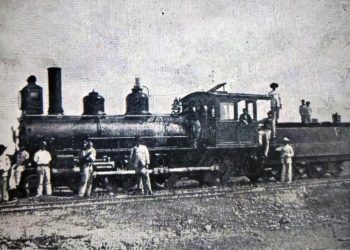“Viandazo” is a commonly used term, especially among people of my generation. Unlike the meaning attributed to the term by the Dictionary of Americanisms of the Royal Academy of the Spanish Language (RAE), which defines it as “a labor protest in which workers refuse to enter the company canteens and only eat what they carry in their “viandas” or containers,” in our common speech, in our Cuban language, the word has a very different meaning.
“Viandazo,” among us, is an expression widely used to mean an action ― blow, collision, fall, baseball connection, adverse and surprising result, getting fired from a job or position, etc. ― of great magnitude, and almost always unexpected. For example: “the Reorganization’s tremendous viandazo.”
“El Viandazo” is also the title of one of the ICAIC newsreels, directed by the great Santiago Álvarez back in 1989.
It’s about one of those exceptional features, like a “whip with bells on the tips,” where in just a few minutes the difficult situation of the production and distribution of tubers and vegetables in our country was revealed. In one of the initial sequences, a kind of parody was made of one of the most used answers to explain/justify the meager levels of production obtained. The typical bureaucrat, making a fool of himself in the middle of the furrow, responds to journalists that the low harvest was due to lack or excess of rain, or both at the same time… it didn’t matter. Meteorology always being the justifying argument.
But the truth is that the weather is one of the external factors that agricultural producers have to deal with, not only in Cuba. And its management is as out of reach as the U.S. blockade itself.
It was a colleague who discovered the documentary for me, and who provoked this little trip back in time to relive those difficult years in which we were silently but inexorably approaching what would be the Special Period, the same one that is still with us today.
In 1989, the Open Farmers’ Market had been suppressed for some time. It took no more than a week to eliminate it — something very similar to what happened in 1968 with the remnant of the private sector during the so-called Revolutionary Offensive, in an almost magical exercise that eliminated the market, the sellers and intermediaries and, above all, the products. It was a decision made on May 17, 1986, at the 2nd National Meeting of Agricultural Cooperatives, considering that the Open Farmers’ Market had become “a great obstacle for the development of the cooperative movement and that, as was said here, even led to the emergence of a series of groups and intermediary elements that have become rich and profited,” in the words of Fidel Castro.
Participating in that market could cause cooperatives to be rejected by the people. Asking them not to participate and allowing that market to continue functioning put them at a disadvantage. Those were the arguments.
The Collection and the Select Fruit enterprises would be chosen to replace such a harmful and demoralizing institution. Both had to, with their good performance and management, fill the void that the Open Farmers’ Market left and supply the Parallel Market with fresh products. Neither of them could comply with the assigned task.
The result was different: the growth of a black market for agricultural products that raised prices to levels never seen before and contributed significantly to inflation; the discouragement of agricultural production, even that of those same cooperatives that argued in favor of its eradication; the proven inability of state production and distribution to satisfy the needs of the population; and, consequently, the reduction of access to said goods, both due to the difficulties in finding them and the risk of acquiring them.
The ICAIC’s “El Viandazo” showed us, three years later, the empty stands, the very upset population — the same population that was upset before, with the prices of the Open Farmers’ market —, asking themselves almost the same question we still ask ourselves today, thirty-five years later: how is it possible that a “purely agricultural” country cannot produce agricultural products in sufficient quantities to satisfy the basic needs of its population?
The 1990s version of the Open Farmers’ Market of the 1980s showed a group of lessons learned. The so-called Agricultural Markets, where cooperatives also participate, have survived for thirty years. They are not perfect at all; they are also not close to what they should be. But they have overcome constant attacks, from malicious inspections and inspectors to recurring price caps, and post-Reorganization inflation, of which they are subjects and objects.
The increase in the supply of agricultural products and the relative stability that the opening of the new version of the Open Farmers’ Market achieved in the 1990s reduced prices, encouraged producers and distributors and created other types of expectations.
Today, unlike 1989, in a percentage of those markets, the stands display products, the population knows there is a place where they can access those goods, if they have enough money. The “viandazo” is another, it is a “viandazo” to the purchasing power of the salary.
Learning from history is important. Today, faced with the debate about the role that different actors play in our economy, that experience helps us understand what we should not do. To understand that it is crucial not to confuse causes and consequences and that every measure taken has costs, some immediate and others mid-term.
In this case, which is ours, that of all of us who today share the reality of our country, remembering should not mean reliving it again.











